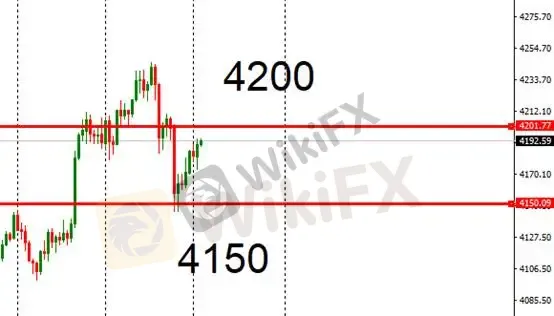简体中文
繁體中文
English
Pусский
日本語
ภาษาไทย
Tiếng Việt
Bahasa Indonesia
Español
हिन्दी
Filippiiniläinen
Français
Deutsch
Português
Türkçe
한국어
العربية
U.S. House Passes Stopgap Funding Bill, Ending Government Shutdown
Abstract:The U.S. House of Representatives has finally approved a temporary funding bill, officially ending the historic six-week federal government shutdown — the longest in U.S. history. However, with fiscal
The U.S. House of Representatives has finally approved a temporary funding bill, officially ending the historic six-week federal government shutdown — the longest in U.S. history. However, with fiscal disbursements and administrative systems halted for an extended period, the government now faces a daunting restart process. Experts warn that returning to normal operations could take several days, or even more than a week. The Congressional Budget Office (CBO) estimates that the six-week shutdown will trim 1.5 percentage points from fourth-quarter GDP, resulting in a net economic loss of roughly $11 billion, with lasting repercussions for administrative efficiency, social welfare, and corporate activity.
The aftershocks of the shutdown are already visible. White House National Economic Council Director Kevin Hassett noted that since no household survey was conducted in October, the U.S. will only receive “half an employment report”—covering job creation data but lacking the critical unemployment rate. He added that roughly 60,000 workers effectively lost their jobs during the shutdown, distorting data and complicating market assessments of the economys health. Hassett emphasized that the current CPI trend still aligns with market expectations for further Fed rate cuts, though the missing data makes policy communication far more challenging.
Meanwhile, Federal Reserve officials continue to strike a hawkish tone ahead of key economic data releases. FOMC voter and St. Louis Fed President Alberto Musalem stressed that inflation remains above target and policy should stay cautious. Next years voter, Cleveland Fed President Loretta Mester, echoed that rates should be held steady to ensure a sustained disinflation trend. Minneapolis Fed President Neel Kashkari said he remains unconvinced about rate cuts and will decide based on future data, while San Francisco Fed President Mary Daly noted that it is “too early to determine” whether a December rate cut is appropriate. Collectively, their comments suggest that a firm rate-cut consensus has yet to form within the Fed, given persistent inflation pressures and incomplete data.
Beyond domestic concerns, global financial systems are on alert. European financial-stability officials are exploring the creation of a regional dollar liquidity pool to reduce reliance on the Federal Reserve‘s swap-line mechanisms. Officials fear that future geopolitical or policy shifts—such as potential uncertainty after Chair Jerome Powell’s term ends in May 2025—could weaken the Fed‘s external support. Europe is reportedly studying Asia’s Chiang Mai Initiative and considering tighter banking regulations as backup measures, effectively preparing for a possible “worst-case scenario.” This reflects the worlds growing dependency on—and anxiety about—the stability of the dollar system.
While the passage of the stopgap funding bill lifts Washington out of its immediate gridlock, the economic and policy ripple effects are just beginning. Missing data clouds market judgment; divided Fed rhetoric heightens uncertainty over policy direction; and international concern over the dollar‘s reliability continues to mount. In the coming weeks, whether the U.S. economy can quickly regain momentum post-shutdown—and whether the Fed can make prudent policy decisions amid limited data—will remain the market’s key focus.
Gold Technical Analysis

Current Range: $4,150 – $4,200/oz
Trading Strategy: Favor long positions near support and short positions near resistance within the range. Suggested stop-loss: $10–$20 beyond entry.
Resistance: $4,200/oz
Support: $4,150/oz
Risk Disclaimer:
The above views, analyses, and data are for general market commentary only and do not represent the official stance of this platform. Investors should exercise independent judgment and assume all risks associated with trading activities.
Disclaimer:
The views in this article only represent the author's personal views, and do not constitute investment advice on this platform. This platform does not guarantee the accuracy, completeness and timeliness of the information in the article, and will not be liable for any loss caused by the use of or reliance on the information in the article.
WikiFX Broker
Latest News
Mitrade Arabic Platform Targets MENA Gold Trading Boom
Israeli Arrested in Rome Over €50M Forex Scam
New FCA Consumer Alert 2025: Important Warning for All Consumers
EmiraX Markets Withdrawal Issues Exposed
Global Guide to Finding Forex IBs/Brokers — Share Your Pick and Win Big!
Consob Targets Political Deepfake “Clone Sites” and Unlicensed Platforms in Latest Enforcement Round
WikiEXPO Global Expert Interviews: Gustavo Antonio Montero: ESG in Finance
Trump tariffs are helping drive U.S. beef prices to new highs
Scam Alert: GINKGO-my.com is Draining Millions from Malaysians!
Ghost Global Limited (ghostgloballtd.com ) Review: Users Complain About Slow Replies, Fake Portfolio
Currency Calculator



